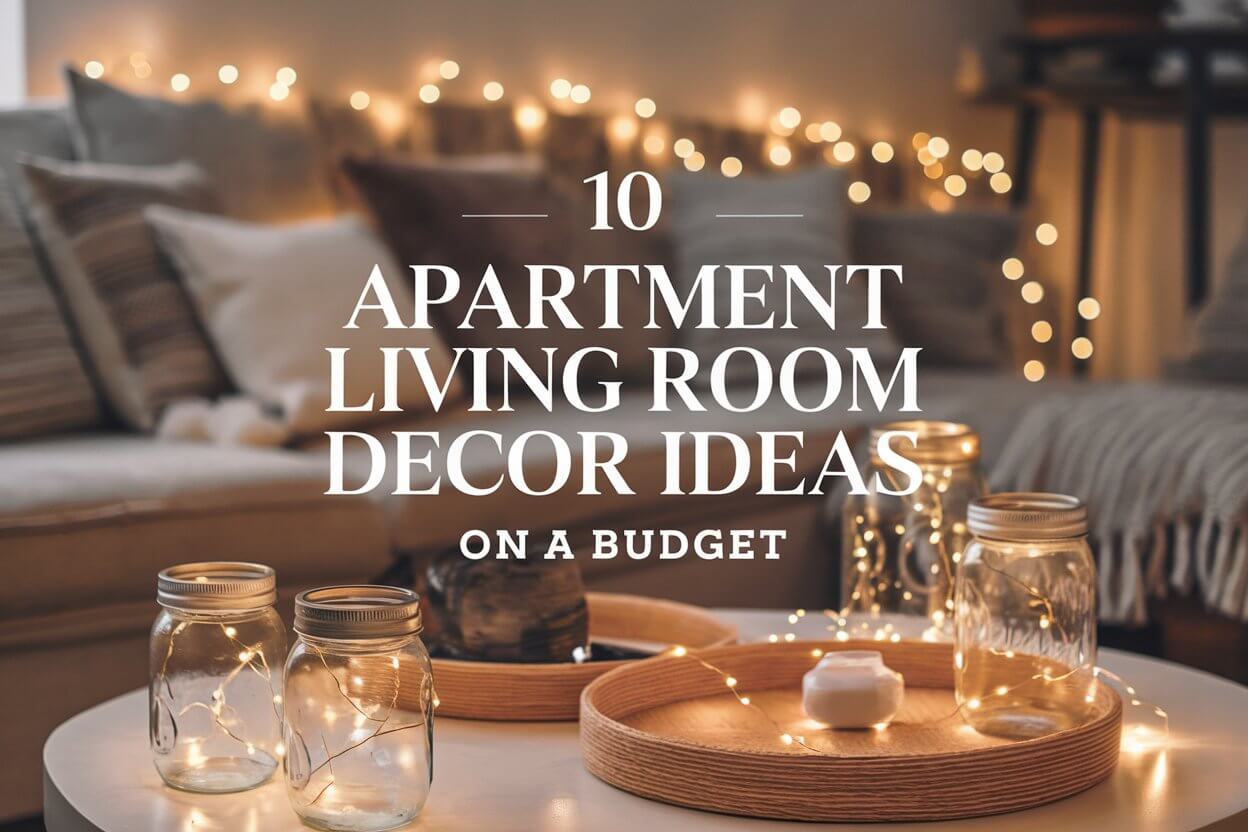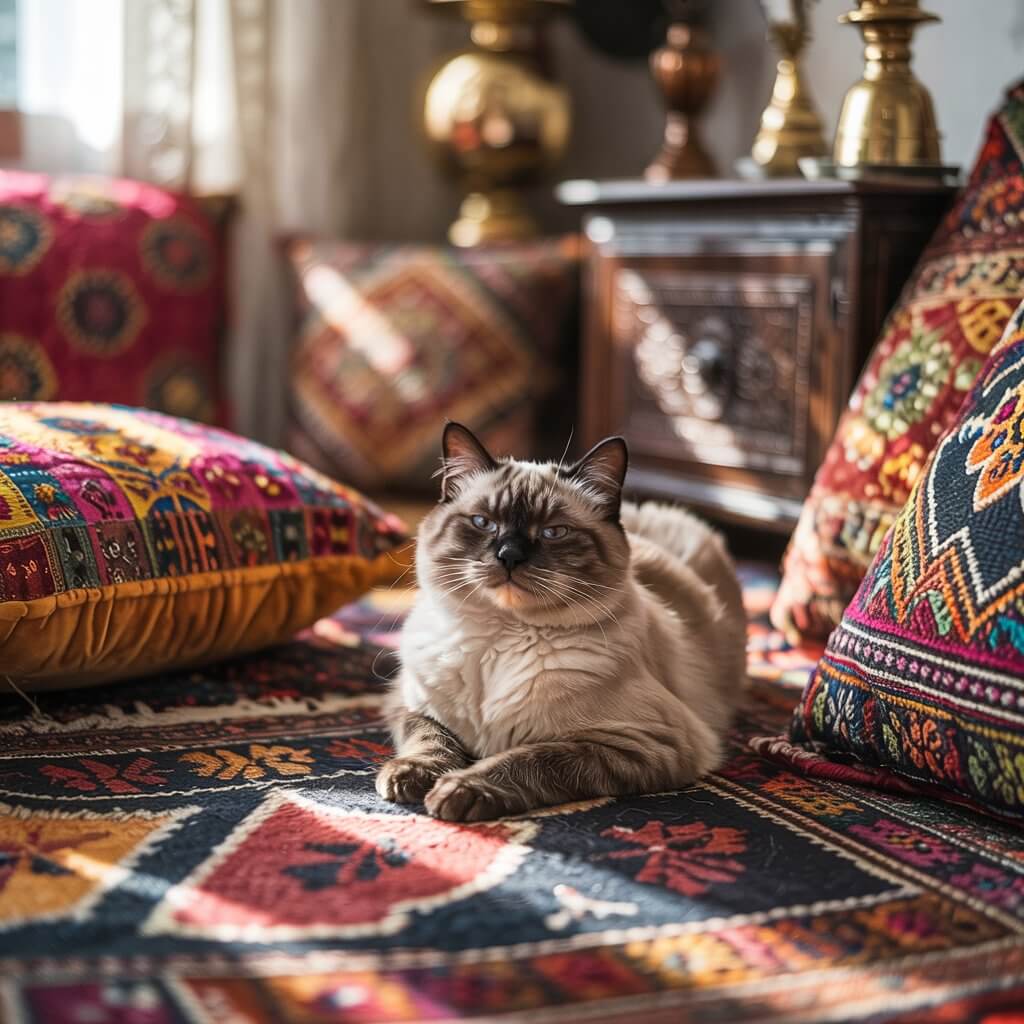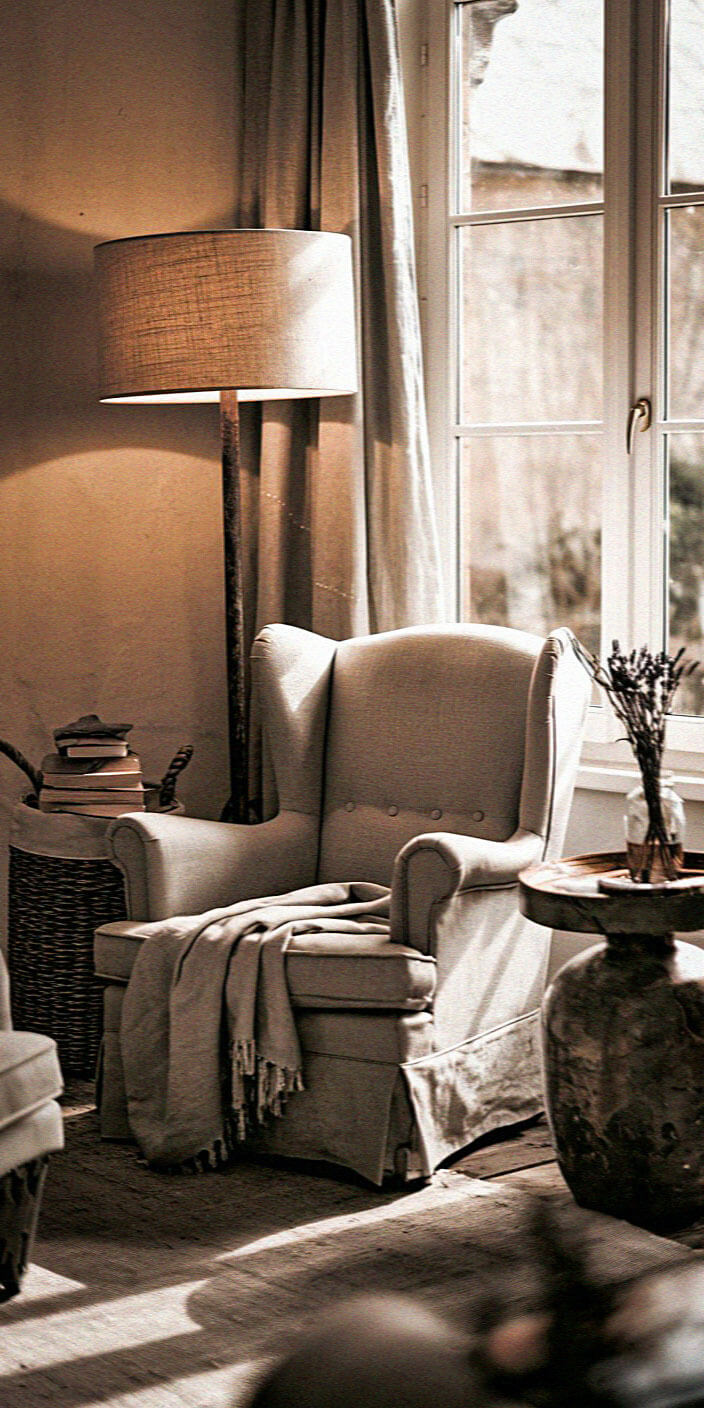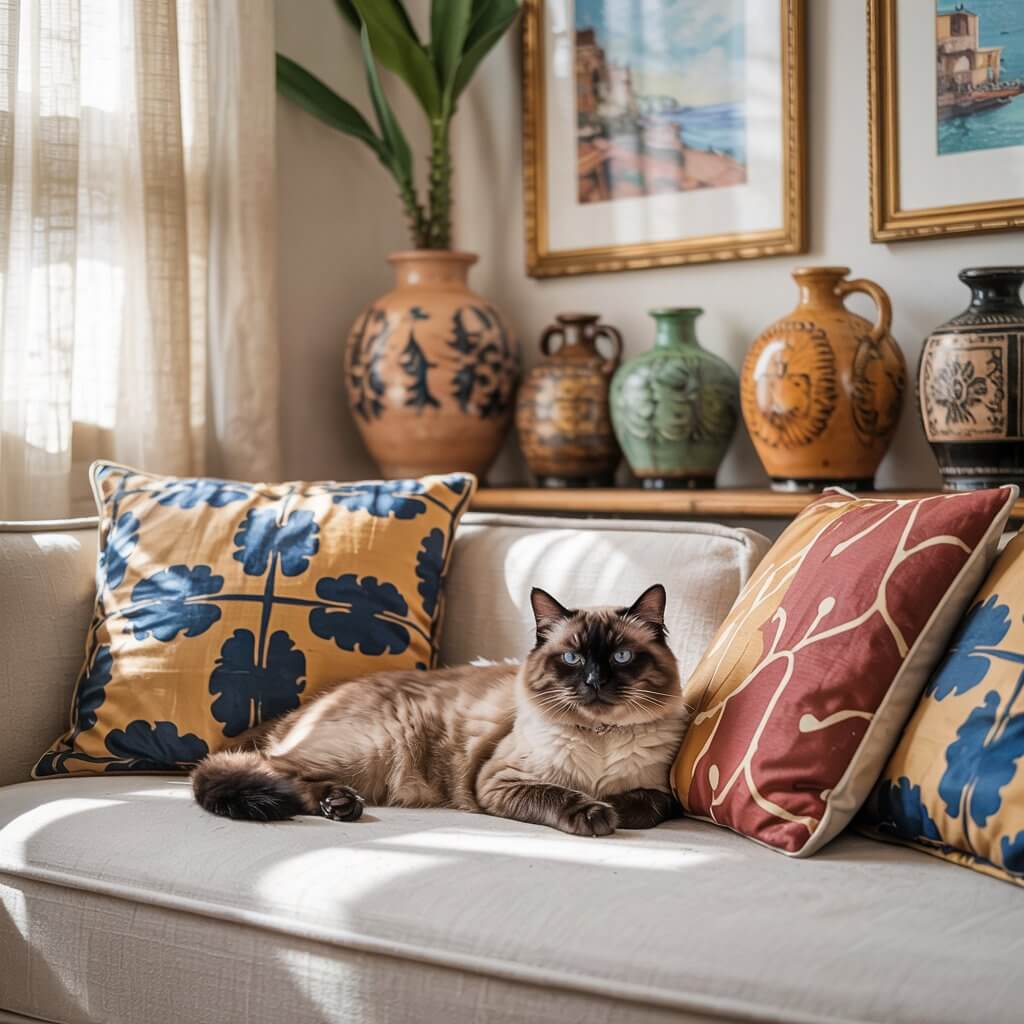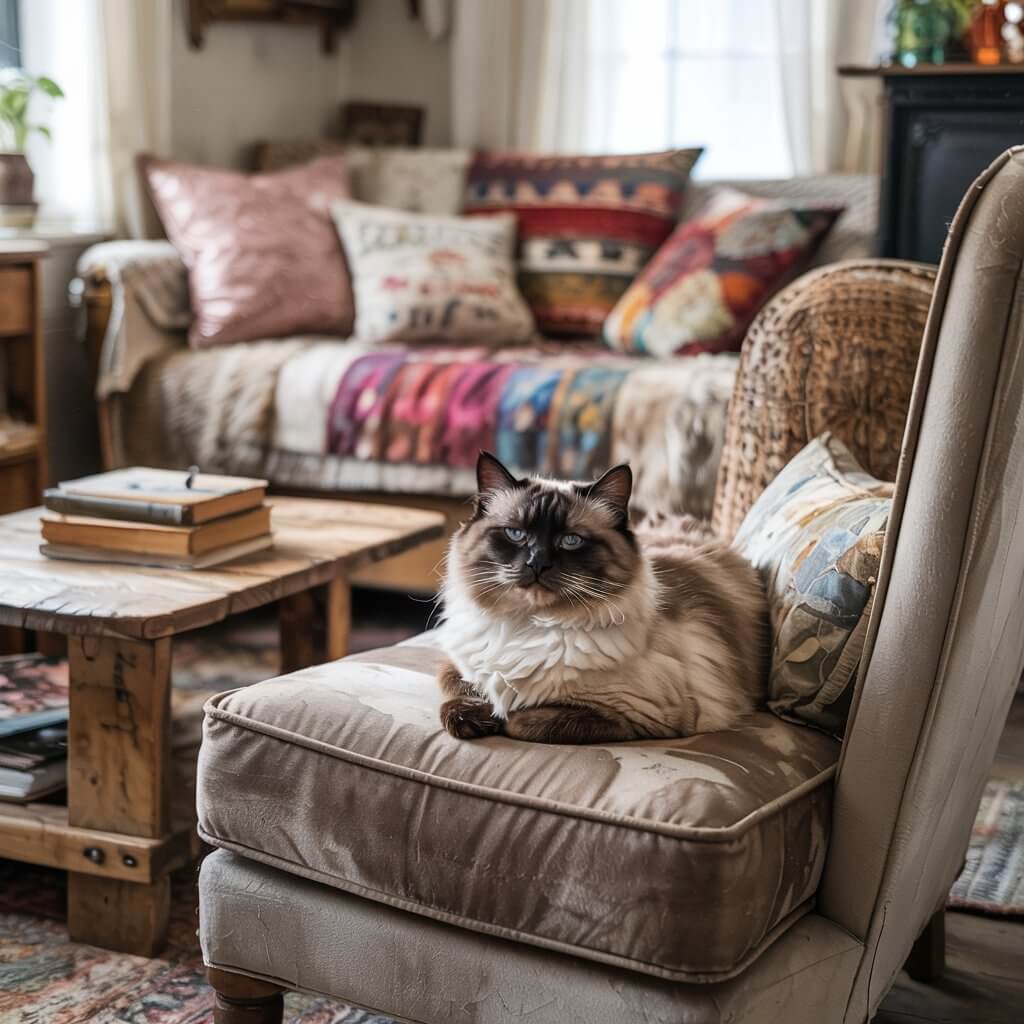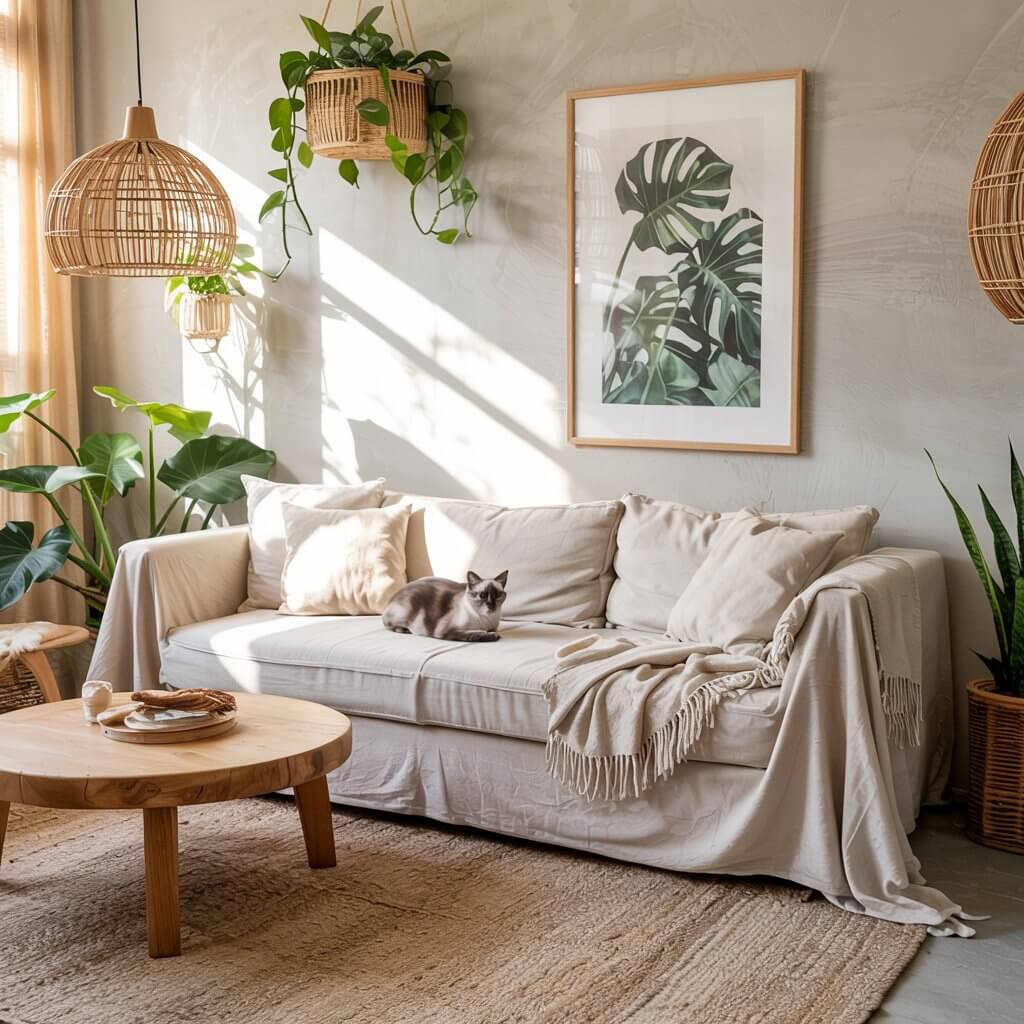
This website contains affiliate links. As an Amazon affiliate, I earn from qualifying purchases (What’s This?).
A few weeks ago, I found myself rearranging the living room (again) with a chai in one hand and a ficus leaf in the other.
It had just rained, and everything outside felt so fresh, the kind of green that makes you want to bring the outdoors in.
I’d just decluttered the corner near the window and finally brought in those breezy linen curtains I’d been eyeing. And just like that, the room started to breathe a little.

That tiny shift kicked off a whole biophilic design refresh. I didn’t realize it at first, but creating a more natural environment inside, using light, plants, and texture, made a bigger difference than I expected.
It wasn’t just about beauty. It was about harmony, energy, and the way a well-designed interior actually feels.
Here’s how I turned our living room into a space that feels like a lush escape—without tearing down walls or remodeling the architecture.
1. Go Big with Greenery (Without Overcrowding)
This one’s obvious, but worth saying: the plants are the main characters here. I mixed heights and leaf shapes—think one towering fiddle leaf fig, a bushy pothos trailing off a shelf, and a few smaller moments like a fern in a matte ceramic pot on the countertop.
Tip: Not everything needs to be real. I snuck in a couple of faux stems from this lush-looking set I found here (they blend in beautifully with the real ones and still improve the aesthetics of the space).
👉 If you’re new to houseplant styling, I shared a few low-maintenance picks in this post on cozy corner nooks. Bonus: certain plants can even help as natural air purifiers that can be used to improve indoor air quality.
2. Earthy Textures Underfoot
One of my favorite updates was layering an undyed jute rug over the existing one. It instantly grounded the space—literally and visually. It’s not perfect—and that’s exactly why I love it. The jute rug has these chunky braided strands that feel a little wild, a little raw, but still somehow elegant. Like nature decided to get into textile design for a minute.
To soften it up, I layered on a wool throw in the dreamiest pale sage green. It’s the kind of blanket that makes you want to cancel plans and curl up with a book. It ties the whole floor together and subtly connects all the furniture pieces in a way that just works—like the room finally found its rhythm.
Quick tip: If you’re on a budget, don’t skip the thrift store. I’ve found beautiful natural fiber rugs with the perfect amount of character—frayed edges, faded patterns, a little history. They tell a story without trying too hard.
3. Letting the Light Do the Work
Honestly? This might be my favorite change of all. I ditched the heavy blackout curtains and brought in sheer linen panels that let the daylight pour in. Now, in the late afternoon, the sunlight streaks across the wood floor, glints off the glass, and dances in the mirror like it’s putting on a little light show just for me.
It instantly lifted the whole atmosphere—brighter, calmer, more alive. Just goes to show: sometimes the best interior design move is simply letting the sky in.
If your living room doesn’t get great light, try using glass, mirror, or even reflective surfaces like polished marble. A mirror (this arched one I love) across from a window can bounce the sky’s light around the room.
Fun fact: increasing daylight in a space has been linked to better productivity, better circadian rhythm, and even lower blood pressure. Design isn’t just visual—it’s biological.
4. Soft Neutrals with a Hint of Moss
I kept the color palette gentle: warm whites, earth tones, pale clay, and a touch of moss green. The idea? Calm, not cold.
I picked up this linen pillow set in a muted eucalyptus shade and paired them with a boucle chair (I found mine here). It has soft upholstery and a rounded back that feels like a little hug. The vibe leans a little Art Deco meets natural minimalism, and honestly, I’m not mad at it.
👉 Related: If you loved this gentle palette, check out my neutral boho bedroom post—it’s like this but with a cozy bedroom twist.
5. Sculptural Wood Accents
Every room needs a few grounding elements, and for me, that means wood. I leaned into sculptural shapes—curvy, raw-edged bowls, a coffee table made from reclaimed oak, and a small driftwood piece I found at a flea market.
Even just one raw wood sculpture adds texture and warmth. It’s like bringing a tree indoors without the mess. And it softens modern interiors in a way that feels timeless.
Bonus tip: Consider adding a cork stool or rattan bench—both are lightweight, environmentally friendly, and full of texture.
6. Stone, Clay, and Ceramic Touches
Biophilic design is about more than greenery. It’s about working with the materials the earth gives us. That means clay, terracotta, stone, and rough ceramic finishes.
I styled the shelves with small handmade pots, a terracotta diffuser, and a chunky mug that makes my morning routine feel like a philosophy class in minimalism. There’s something about the uneven glaze and gritty texture that balances all the soft fabric in the room.
It’s a small detail, but it adds a whole new atmosphere—one that feels rooted and real.
7. A Little Vertical Green (No Commitment Required)
Totally optional, but if your space is begging for a moment, this is it. I dragged an old wooden ladder over by the balcony door (one of those pieces I almost gave away but couldn’t part with), and turned it into a mini vertical garden. A few trailing vines, a bundle of dried eucalyptus, and a tiny air plant in a ceramic hanger later—and boom. Instant focal point.
It’s got just enough texture and height to feel intentional, but still laid-back. No drilling, no soil everywhere. Just a little nod to the jungle, minus the upkeep.
If you want a statement without the watering schedule, this framed moss wall art is lightweight, sculptural, and surprisingly low-maintenance.
It’s one of those corners that makes people stop mid-sentence. Not quite a jungle, but definitely whispering jungle-adjacent. There’s this quiet wildness to it—like a little habitat I pieced together with vines and instinct. It plays with height, texture, and just enough looseness to feel alive without feeling chaotic.
The Room That Breathes Back
Now when I step into this space, it doesn’t just look better—it feels different. Calmer. Warmer. Like it’s holding space for me, not the other way around.
The living room has its own pace now. Slower. Softer. There’s a bit more texture, a little more soul. Even on those too-much-in-my-head days, I find myself pulled to the window with a cup of tea, just watching how the light shifts across the floor. And somehow, that tiny moment feels like enough.
Sometimes I sit and just notice things: the flicker of light on a leaf, the curve of a thrifted chair, the sound of a bird outside. It’s subtle, but these are the moments that make a house feel like home.
And that? That’s the power of good interior design—especially when it starts with nature.
Quick Styling Checklist
| Element | Idea or Tip |
|---|---|
| 🌿 Greenery | Layer tall and trailing plants (real or faux) |
| 🪵 Textures | Add jute, wool, rattan, and raw wood |
| ☀️ Light | Use daylight, mirrors, and light curtains |
| 🎨 Color Palette | Warm neutrals + moss, clay, and earth tones |
| 🪞 Accents | Add mirror, glass, sculptural furniture |
| 🧱 Materials | Include stone, clay, terracotta, and linen |
Looking for more cozy-yet-chic ideas? Peek into my Japandi-style retreat or my favorite kitchen corner makeover here.
And if you’ve tried a biophilic refresh lately, I’d love to see it—bonus points if there’s a rogue bird involved.
This website contains affiliate links. As an Amazon affiliate, I earn from qualifying purchases (What’s This?).
